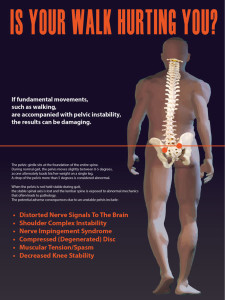Running is one of people’s first choices when it comes to weight loss and building endurance. However, most people do not realize the high occurrence of running related injuries. Injuries happen to 40-50% of runners every year. (1) In fact, new runners get hurt as frequently as 33 times for every 1000 hours of running. (2)
Most of the time, the sport itself is not the problem. The assumption that anyone can pick up running without proper training is.
What are the risk factors for running related injuries?
-
Previous injuries
This is one of the major risk factors for runners. If you were previously injured in the last 12 months, you are more likely to be injured again while running. (3) This may be due to incomplete recovery from previous injuries, but there is no consensus yet.
-
Running more than 40 miles a week (3)
If you are training longer distances each week, it can overload your musculoskeletal structures beyond your body’s regeneration abilities, resulting in an injury. (3)
-
Abnormal biomechanics
A new review in 2015 (4) found that excessive internal rotation of the knee and adduction of the hip are risk factors for iliotibial band syndrome, which is a painful hip and knee condition common among runners.
What to do
-
Make sure you completely recover from previous injuries.
Understand that running injuries are often related to overuse, meaning that you are overloading your joints, muscles and other soft tissues. (3) Overuse injuries are microtrauma that accumulates over time, so there isn’t always an identifiable incidence where the injury occurs. What you are experiencing may be an existing overuse injury that is mistaken as a new injury.
-
Run in moderation.
If you are running to increase your fitness and reduce your cardiovascular risk, moderate running will do the job. When you run “too much”, the reduced risk of some diseases (e.g. cardiovascular disease, diabetes mellitus) may be offset by more injuries and arthritis. (5) In fact, 75% of elite marathon runners have some sort of running related pain, mostly in their lower legs. (6)
-
Strengthen proper muscle groups.
Weak gluteus muscles, quadriceps muscles and hamstrings can all result in increased knee pain in runners. (7) A strategic strength resistance exercise program is highly recommended to stabilize these joints and prevent injuries. A proper gait analysis will shed light on the specific imbalance and instability you have during walking, which are accentuated during running. Get checked for any underlying imbalance and dysfunction. The infographic illustrates one aspect of instability during gait.
References:
- Fields KB, Sykes JC, Walker KM, Jackson JC. Prevention of running injuries. Curr Sports Med Rep. 2010 May-Jun;9(3):176-82. [PubMed]
- Videbaek S, Bueno AM, Nielsen RO, Rasmussen S. Incidence of running-related injuries per 1000 h of running in different types of runners: a systematic review and meta analysis. Sports Med. 2015 Jul;45(7):1017-26. [PubMed]
- Saragiotto BT, Yamato TP, Hespanhol Junior LC, Rainbow MJ, Davis IS, Lopes AD. What are the main risk factors for running-related injuries? Sports Med. 2014 Aug;44(8):1153-63. [PubMed]
- Aderem J, Louw QA. Biomechanical risk factos associated with iliotibial band syndrome in runners: a systematic review. BMC Musculoskeletal Discord. 2015;16:356. [PubMed]
- Cymet TC, Sinkov V. Does long-distance running cause osteoarthritis? J Am Osteopath Assoc. 2006 Jun;106(6):342-5. [PubMed]
- Teixeira RN, Lunardi A, da Silva RA, Lopes AD, Carvalho CR. Prevalence of musculoskeletal pain in marathon runners who compete at the elite level. Int J Sports Phys Ther. 2016 Feb;11(1):126-31. [PubMed]
- Luedke LE, Heiderscheit BC, Williams DS, Rauh MJ. Association isometric strength of hip an knee muscles with injury risk in high school cross country runners. Int J Sports Phys Ther. 2015 Nov;10(6):868-76. [PubMed]
About the Author
Dr. Lily Semrow is a Board Certified Chiropractic Neurologist who focuses on Neuro-Structural Correction. She has a B.S. in Nutrition and a doctorate in Chiropractic. She has a passion for serving families, and helping people who could not get better through traditional and alternative means.

